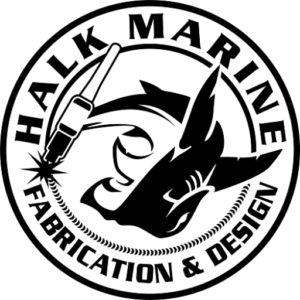Marine Aluminum Alloys
The term “marine grade” aluminum is thrown around so much that it’s seems like it’s more of a marketing buzzword than a technical description. Think of when you hear “aerospace grade aluminum” widgets you hear of. All that usually means is the product is made from 6061 alloy, which happens to also be the most common and relatively inexpensive grade of aluminum. I’m guilty of it as well in some of my marketing for crawfish cookers. Technically it’s accurate, but does the consumer really know what it means?
What does “marine alloy” really mean?
The 2 critical characteristics we want for marine construction are: high strength and excellent corrosion resistance. Of the many different aluminum alloys available, the only alloys recommended for use in applications exposed to salt water are the 5xxx-series and the 6xxx-series.
In the early 1950s, several weldable, medium-to-high strength 5000 series aluminum magnesium alloys became available, which were suitable for corrosion-resistant, light-weight ship hulls and related structures. These alloys became known as marine alloys. . The 5000 series marine alloys have excellent corrosion resistance and retain good weld strength without post-weld thermal treatment. Of the many different aluminum alloys available, the only alloys recommended for use in applications exposed to salt water are the 5xxx-series and the 6xxx-series.
Note that the remaining numbers on the alloy don’t tell us anything specifically about strength or quality, they just identify a specific recipe and method for producing that particular aluminum.

Guide for Aluminum Hull Welding, AWS D3.7, American Welding Society, 2004
Non-heat treatable alloys – 5xxx series
The alloys that have 5 as the first digit of their alloy designation, (i.e. the 5xxx-series) have magnesium as the principal alloying agent, and many also may have a significant amount of manganese. The 5xxx-series are not heat-treatable, but obtain additional strengthening by work hardening.
The most common non-heat treatable marine aluminum alloys are 5052, 5083, 5086, 5454, and 5456.
5086
Alloy 5086 is the most successful marine alloy of the past 40 years and thus recommended for most marine construction. It is a general purpose material for marine structures requiring a comparatively medium-strength, lower magnesium-content, weldable alloy having good corrosion-resistance and fabrication characteristics. Typical applications of this alloy include hull, deck, and bulkhead plate and shapes, towers, masts, bulwarks, tanks, and similar components.
5083
Alloy 5083 is stronger than 5086, so it’s recommended for components of ship structure which require a higher-strength and higher magnesium content, such as structures requiring a high strength-to-weight ratio, such as hydrofoil hulls, surface-effect craft, amphibious vehicles, and similar components.
5052
Alloy 5052 was one of the first commercial aluminum-magnesium marine alloys and is still in use for small pleasure craft. While lower in strength than 5083 and 5086, it has similar corrosion resistance and is a great option for non-critical hull structures and above deck outfitting where ultimate strength is not an issue. It costs significantly less than 5086/5083 as well. Smaller mass production boats are usually made entirely out of 5052.
5454
Where operating temperatures in excess of 150°F (65°C) are anticipated, 5454 alloy is used to avoid the
problem of stress corrosion cracking found in aluminum alloys with higher magnesium content. It is useful in engine rooms, exhaust enclosures and similar applications. It would be rare to see this used in recreational boats.
Heat Treatable Alloys – 6xxx Series
The alloys with a 6 as the first digit, the 6xxx series, have magnesium and silicon as principal alloying agents. These form magnesium silicide, which makes the alloys heat treatable. The remaining three digits represent the specific alloy composition.
6000 series alloy is used to make extruded shapes, such as pipes, tubes, angles, tees, etc. 5000 series can be extuded as well but it’s much costlier. The 6000 series do not have as good of corrosion resistance as the 5000 series so they are not recommend for below the waterline use.
6061
Alloy 6061 is the most common 6000 series used throughout the world. It’s stronger than even 5083/5086, but that advantage goes away when it’s welded because it loses it’s temper strength near the welds, so the designer must account for this loss of strength.
6061 also has great machineability compared to the 5xxx series. The T6 high strength temper tends to crack when being bent and formed so often another alloy or temper is chose for formed items.
6063
Alloy 6063 is a lower strength cousin to 6061, but it has excellent forming properties. Pipe structures for T-tops and poling platforms have to be made from 6063 instead of 6061 to avoid cracking in the bends.
6463 – the anodized pipe
Anodized aluminum pipe usually comes as the 6463 alloys. It has similar properties to the 6063 pipe for formability, but comes with a hard anodized coating that provides a durable polished finish and resists corrosion.
Anodized pipe costs about 2-2.5x the price of normal aluminum pipe and is more difficult to weld through the coating and handle during fabrication to prevent scratching and arc strikes.
If you have any questions or comments, feel free to post them below or reach out to us directly.
If you enjoyed this post, please share on social media with the buttons below!



Share this entry